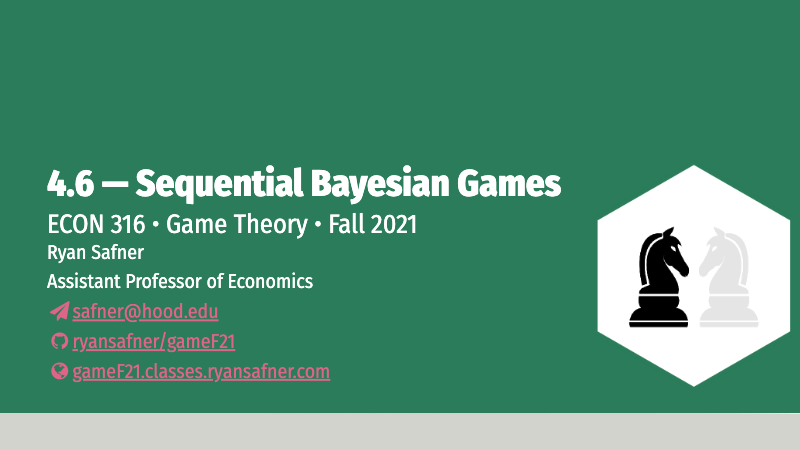Overview
Finally, we apply what we have learned about dealing with asymmetric information to the case of sequential games. We consider two types of these games (to varying levels of detail and examples):
Screening games where the uninformed player moves first, typically offering several options to the informed player, hoping to get the informed player to reveal their type by self-selecting.
Signaling games where the informed player moves first, and may try to signal their type to the uninformed player, who must respond.
The latter type have many famous examples in game theory and applications, and we will look at several examples of signaling games.
Slides
Below, you can find the slides in two formats. Clicking the image will bring you to the html version of the slides in a new tab. Note while in going through the slides, you can type h to see a special list of viewing options, and type o for an outline view of all the slides.
The lower button will allow you to download a PDF version of the slides. I suggest printing the slides beforehand and using them to take additional notes in class (not everything is in the slides)!
